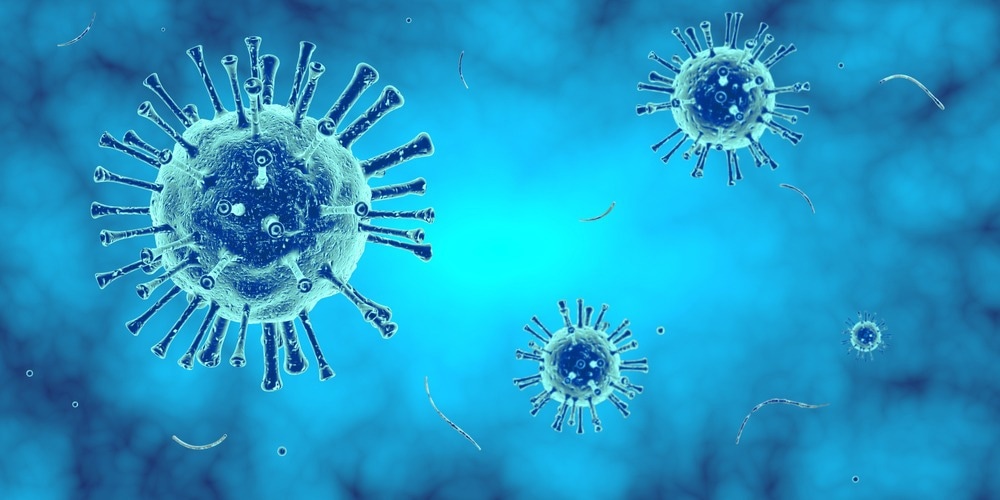In a recent study published in Science Translational Medicine, researchers assessed the impact of dendrimer nanotherapy in treating severe coronavirus disease 2019 (COVID-19).
 Study: Dendrimer nanotherapy for severe COVID-19 attenuates inflammation and neurological injury markers and improves outcomes in a phase2a clinical trial. Image Credit: ThSucho/Shutterstock
Study: Dendrimer nanotherapy for severe COVID-19 attenuates inflammation and neurological injury markers and improves outcomes in a phase2a clinical trial. Image Credit: ThSucho/Shutterstock
Background
Hyperinflammation elicited by severe acute respiratory syndrome coronavirus 2 (SARS-CoV-2) is one of the primary causes of COVID-19 disease severity arising due to activated macrophages. A hydroxyl-polyamidoamine dendrimer–N-acetylcysteine conjugate called OP-101 has been widely studied since it especially targets activated macrophages. Thus, OP-101 has improved COVID-19-related outcomes among preclinical outcomes of neuroinflammation and systemic inflammation.
About the study
In the present study, researchers estimated the preliminary efficacy and safety of OP-101 in treating severe COVID-19.
The study involved 24 patients having a World Health Organization (WHO) seven-point ordinal scale (7OS) score of five and more who were enrolled at five centers in the US from August 2020 and March 2021. The participants were enrolled in three cohorts based on the doses administered. After the assessments for each dose level were completed on day 3, the laboratory and clinical data were reviewed by the independent data monitoring committee (IDMC), and dose escalation was performed after each review.
Patients were treated with corticosteroids during the enrollment period. The team estimated neurological injury markers and inflammatory markers using frozen samples, and comparisons were drawn between the groups. Furthermore, the team compared interleukin-6 (IL-6) levels between the two study groups two hours after infusion. Serum levels of OP-101 were also estimated at two, 12, and 24 hours after administering OP-101 intravenously (IV) at two, four, or eight mg/kg, or placebo. Additionally, C-reactive protein (CRP) serological levels were evaluated at predose and at two, 12, and 24 hours as well as at two, four, and seven days after OP-101 infusion.
Neurofilament light chain (NfL) was estimated with an immunoassay. Glial fibrillar acidic protein (GFAP) and total Tau protein were evaluated at predose and two, 12, and 24 hours, and three, five, eight, 15, 22, and 30 days after infusion. The inflammatory markers, including IL-6, IL-8, IL-22, IL-10, and tumor necrosis factor-alpha (TNF-⍺), were estimated over time in the serum samples.
Results
The study results showed that more men were enrolled with severe COVID-19 compared to women, indicating that men were at a higher risk of experiencing increased disease severity. Almost 14 of the total 24 patients displayed diabetes as a comorbidity. Notably, patients aged more than 45 years and those who had comorbidities like obesity and diabetes mellitus were more likely to have increased disease severity.
The team noted that absolute lymphocyte count (ALC), predose CRP, and neutrophil-to-lymphocyte ratio (NLR) were comparable among the patient cohorts assessed. An ALC of less than 1 × 109/liter, CRP of 40 mg/liter or more, or NLR of more than 6.82 were independently related to increased disease severity and mortality. Furthermore, increased levels of NLR and CRP and lymphopenia were observed in a majority of the patients, which suggested increased disease severity that matched the clinical presentation of WHO 7OS of five and more observed during enrollment.
The team noted no statistical variation between predose inflammatory and neurological markers among the different patient cohorts, except for IL-6 levels in the serum samples, which were higher in the placebo cohort. Moreover, no statistical differences were observed two hours after infusion for all the biomarkers assessed. CRP concentrations of the patient group remained comparable to that of the predose levels observed in the placebo group, while a consistent decrease was observed among the patients treated with OP-101.
Furthermore, there was a higher increase in the serum levels of NfL in the placebo cohort compared to the OP-101-treated cohort. The rate of change observed was 14.4% per day in the placebo group as compared to the treated group, with a remarkable difference observed for the two highest treatment doses of +3.3% for the 4 mg/kg and +0.2% for the 8 mg/kg cohorts.
The rate of increase in GFAP levels was notably higher in the placebo participants than in the OP-101-treated patients. Additionally, while the Tau protein serum levels increased for the placebo group over time compared to the treated group, there was no significant variation between the two groups. This indicated that OP-101 treatment attenuated increased brain injury markers reported in severe COVID-19 patients.
The team also observed that OP-101 treatment was correlated to improved survival rates. Survival was 43% in the placebo group and 67%, 100%, and 80% in the groups treated with two, four, and eight mg/kg OP-101. Additionally, the risk of 30-day outcome of either mechanical ventilation or death was 71% in the placebo group and 18% across the OP-101 treatment cohorts.
Conclusion
Overall, the study findings showed that OP-101 showed promising magnitudes of efficacy and safety in improving the survival rates and attenuating neurological and inflammatory injury markers in severe COVID-19 patients.